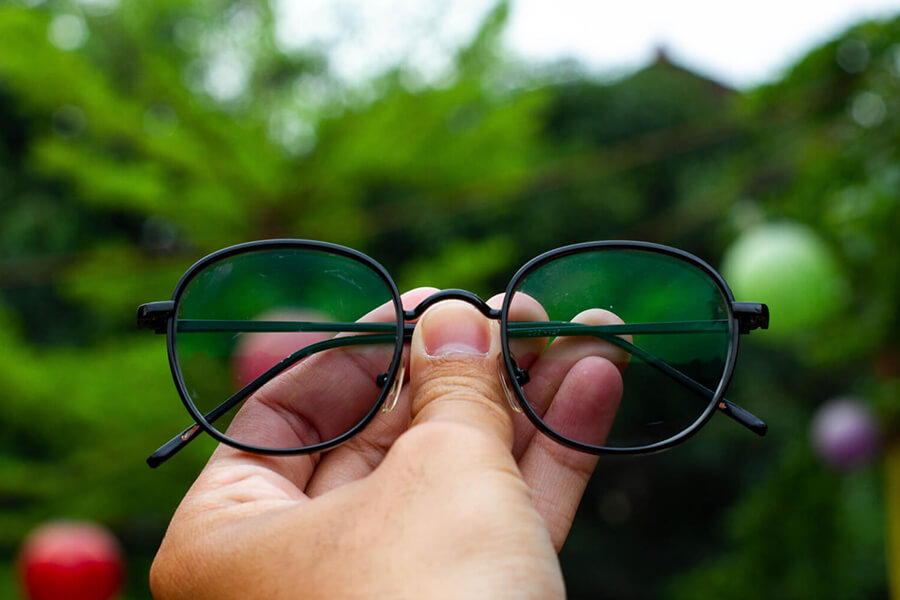
16 Feb Can I use Photochromic lenses for driving?
Are you wondering whether photochromic lenses are suitable for driving? We will explore the topic and shed light on whether these lenses are a practical choice for your driving needs.
Good functional eyesight is crucial in driving. Whether you are driving for necessity or passion you cannot compromise your vision. When a person drives, he is exposed to variable weather conditions, raising concerns about safe driving. The main priority in driving without harm is addressing glare, a frequent cause of road accidents.
Glare is produced when bright light i.e., sunlight is reflected off smooth surfaces and disturbs vision. Surfaces such as roads, wet surfaces, a car’s bonnet, a car at the front, a car’s dashboard, a low sun, etc cause glares when light is reflected off them. This blinding glare is threatening to vision. Photochromic lenses known as transition lenses block dangerous glare and ensure clear visibility when driving.
WORKING PRINCIPLE OF PHOTOCHROMIC LENSES
Photochromic lenses have light-sensitive materials incorporated in them. When exposed to bright sunlight (UV rays) and red color, it makes the lenses go darker. This phenomenon allows an optimum amount of light to enter the eyes that is not harmful. This transition from transparent to dark-tinted is user-friendly and comfortable in variable daylight conditions.
ARE PHOTOCHROMIC LENSES SUITABLE FOR DRIVING?
Most of the car’s windscreens are designed in a way that they block most of the UV rays causing disturbing glares to the driver. As mentioned earlier, the photo-sensitive molecules in the lenses only activate when UV rays are exposed to them so these photochromic sunglasses are of no use when driving during the day inside the car. When driving at night, glares and annoying reflections are caused by headlights and traffic lights or lights from streets that are not considered UV rays. The tinted lenses would cause problems during the night for a person who is already disturbed by halos and glare from streetlights.
HOW CAN PHOTOCHROMIC LENSES BE BENEFICIAL FOR DRIVING?
Disturbing glares caused by road surfaces and headlights during night driving could not be eliminated by photochromic lenses alone. This problem is resolved by combining two optical technologies which are photochromic and polarizing lenses (Transitions XTRActive Technology). They both work together to respond to both UV rays and natural light. Moreover, this combined technique works wonders in different scenarios during daylight. Some types of lenses also protect eyes from harmful blue light emitted from mobile phones and other similar gadgets. Check Here.
In conclusion
A photochromic lens can be a convenient and versatile choice for driving. With their ability to adapt to changing light conditions, they provide enhanced visibility and reduce glare. However, it’s important to consider individual preferences and needs, such as sensitivity to light and personal driving habits. Consulting with an eye care professional can help determine if these lenses are the right option for your specific driving requirements.
FAQs
- Are photochromic lenses good for the eyes?
Photochromic lenses adapt to changing light, reducing glare and UV exposure, making them a great choice for eye protection.
- What color of the photochromic lens is best?
The best color for a photochromic lens often depends on personal preference, but gray and brown are popular choices for natural vision.

No Comments